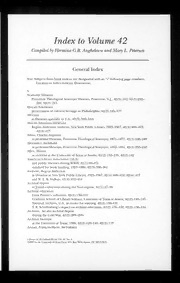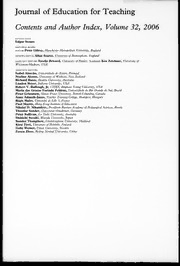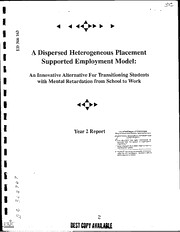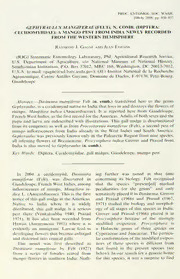
Two-Dimensional Source Coding by Means of Subblock Enumeration PDF
Preview Two-Dimensional Source Coding by Means of Subblock Enumeration
Two-Dimensional Source Coding by Means of Subblock Enumeration Takahiro Ota Hiroyoshi Morita Dept. of Computer & Systems Engineering Graduate School of Informatics and Engineering Nagano Prefectural Institute of Technology The University of Electro-Communications 813-8, Shimonogo, Ueda, Nagano, 386-1211, JAPAN 1-5-1, Chofugaoka, Chofu, Tokyo, 182-8585, JAPAN Email: ota@pit-nagano.ac.jp Email: morita@uec.ac.jp 7 1 0 Abstract—A technique of lossless compression via substring witha lineof2Dsourceasasymbolofanextendedalphabet. 2 enumeration(CSE)attainscompressionratiosaswellaspopular AttheinitialstepoftheCSEencodingprocess,theCSEneeds n lossless compressors for one-dimensional (1D) sources. The CSE to outputfrequenciesof all symbolsof the extendedalphabet. a utilizesa probabilisticmodel builtfrom thecircularstringof an To reduce the computational time, we propose a new CSE J input source for encoding the source. The CSE is applicable to two-dimensional (2D) sources such as images by dealing with a for a 2D source which utilizes the flat torus of an input 2D 4 lineof pixels of 2D source as a symbol of an extended alphabet. source as a probabilistic model instead of the circular string 2 At the initial step of the CSE encoding process, we need to of the source. In the initial step, the total number of output outputthenumberofoccurrencesofallsymbolsoftheextended ] blocksisconstantsincethenewCSEworksinblock-by-block. T alphabet,sothatthetimecomplexityincreaseexponentiallywhen Moreover, we evaluate the limit of the average codeword I the size of source becomes large. To reducethe time complexity, . we propose a new CSE which can encode a 2D source in block- length of the proposed algorithm for general sources. s c by-block instead of line-by-line. The proposed CSE utilizes the [ flat torus of an input 2D source as a probabilistic model for II. BASIC NOTATIONS AND DEFINITIONS encoding the source instead of the circular string of the source. A. Alphabet and Block 1 Moreover, we analyze the limit of the average codeword length v of the proposed CSE for general sources. Let X be a finite source alphabet {0,1,...,J−1} and let 3 |X| be a cardinality of X, that is |X| = J. Let X[m,n] be 3 I. INTRODUCTION the set of all m×n finite blocks p = (p ) 7 (i,j) 1≤i≤m,1≤j≤n In 2010, Dube´ and Beaudoin proposed an efficient off- over X, where p ∈ X is the element of p at (i,j)- 6 (i,j) 0 line data compression algorithm for a binary source known coordinate. Furthermore, let X[∗,∗] be ∪m,n≥0X[m,n], where . as Compression via Substring Enumeration (CSE) [1]. In [2], X[m,n] includes the empty block λ[m,n] when at least one 1 YokooproposedauniversalCSEalgorithmforabinarysource of m and n is 0. For convenience, X[m,0] and X[0,n] are 0 7 and various versions of the CSE for a binary source have defined as {λ[m,0]} and {λ[0,n]}, respectively.For p∈X[∗,∗], 1 been proposed so far [3]–[5]. It is reported that performance let |p| and |p| be the length of row (the height) and the r c : of the CSE [4] is as well as that of an efficient off-line lengthofcolumn(thewidth),respectively.Forexample,when v i datacompressionalgorithmusingtheBurrows-Wheelertrans- X ={0,1},Fig.1illustratesp∈X[3,3] where|p|r=|p|c=3. X formation (BWT) [6]. In [7], it is proved that an encoder, r which is a deterministic finite automaton, of the CSE and 1 0 0 a ! ! ! an encoder without sinks of the antidictionary coding [8] are 1 1 0 ! ! ! ! ! isomorphic for a binary source. Moreover, an antidictionary 0 0 1 ! ! ! ! ! ! codingproposedin[9]providedthefirstCSEforq-ary(q>2) alphabetsources as a byproduct.Iwata and Arimura proposed Fig.1.A3×3 Fig.2.πc(p),σc(p),πr(p),andσr(p)ofpinFig.1. the modified algorithm and evaluated the maximum redun- blockp. dancy rate of the CSE for the kth order Markovsources [10]. Forencodinganinputsource,theCSEutilizesaprobabilis- B. Subblock, Concatenation, and Dictionary tic model built from the circular string which is obtained by Forp∈X[m,n], a subblock p(i+k−1,j+l−1)∈X[k,l] isdefinedas concatenatingthefirstsymboltothelastsymbolofthesource. (i,j) A probabilistic model of the circular string is also useful for λ[0,l] (k≤0 and l≥0), the BWT and antidictionary coding [7], [9], and in [11], it λ[k,0] (k≥0 and l≤0), is shown that an antidictionary built from the circular string iasciudse(DfuNlAfo)r. Hgeonwoemveer,cofomrpaari2sDonssouucrhceassudcheoxasyriabnonimucalgeeic, p((ii+,jk)−1,j+l−1):= p(i...,j) ·.·.·. p(i,j+...l−1) computational time of the CSE is exponential with respect to p ··· p linelengthsincetheCSEworksinline-by-line.TheCSEdeals (i+(kk−>1,j0) and l>0()i+k−1,j+l−1) where 1≤i≤m, 1≤j≤n, k≤m−i+1, and l≤n−j+1. D. Classifications of Flat Tori and Core Hereinafter, without notice, we assume that the height and For p and k (0≤k ≤m), and l (0≤l≤n), width of p are respectively given by m (≥ 2) and n (≥ 2). In particular, (m−1)×n subblocks p(m−1,n) and p(m,n) are T(p,k,l):={q ∈X[m,n] s.t. N(w|q)=N(w|p), (1,1) (2,1) denotedbyπr(p)andσr(p),respectively.Moreover,m×(n− ∀w ∈X[k,l],q is primitive.} (6) 1) subblocks p(m,n−1) and p(m,n) are denoted by π (p) and (1,1) (1,2) c For example, [p] = T(p,m,n). For 0 ≤ k < n and fixed σ (p),respectively.Forexample,forpinFig.1,Fig.2shows c 0≤l≤n, T(p,k,l) is monotone decreasing with k, that is π (p), σ (p), π (p), and σ (p) from the left-hand side. c c r r T(p,k+1,l)⊂T(p,k,l). Similarly, for fixed 0≤k′≤n and For p, the dictionary of p is defined as the set of all the 0≤l′<n, T(p,k′,l′+1)⊂T(p,k′,l′). Next, we define B(p), subblocks of p, that is, B(p):={b∈X[k,l] s.t. σ (π (b))∈D(p¯),σ (π (b))∈D(p¯), D(p):={p(i+k−1,j+l−1) s.t. 1≤i≤m,1≤j≤n, r r c c (i,j) 1≤k≤m,1≤l≤n}∪{λ[0,0]}. (7) 0≤k≤m−i+1,0≤l≤n−j+1}. We assume that elements of B(p) are orderedin ascending Nowwedefineaconcatenationofblocksbycolumn-wisely orderwithitsheight(ifheightsoftheelementsareequal,then as follows: For two blocks s,t∈X[∗,∗] such that |s| =|t| , r r the elements orderedwith its width; if widths of the elements define s : t ∈ X[|s|r,|s|c+|t|c] to be a block obtained by are equal, then the elements are ordered in lexicographical concatenating t at the end of s in columns. Similarly, we ordercolumn-wisely)whereb istheithelementofB(p)(1≤ i define a concatenation of blocks by row-wisely as follows: i≤|B(p)|). For i (1≤i≤|B(p)|), for two blocks u,v ∈ X[∗,∗] such that |u| = |v| , define c c u/v ∈X[|u|r+|v|r,|u|c]tobeablockobtainedbyconcatenating T(B(p),p,i):={q ∈X[m,n] s.t. N(bj|q)=N(bj|p), u at the end of v in rows. 1≤∀j ≤i,q is primitive.} (8) C. Flat Torus, Primitive, and Frequencies of Subblocks For example, [p] = T(B(p),p,|B(p)|). For 1 ≤ i < For p, a flat torus of p, denoted by pT, is constructed by |B(p)|, T(B(p),p,i) is monotone decreasing with i, that is T(B(p),p,i+1)⊂T(B(p),p,i). concatenating the most left-hand side column (resp. the top A u∈B(p) such that a : u,b : u,u : c,u : d∈D(p¯) row) to the most right-hand side column (resp. the bottom row) of p. The flat torus can be treated as an infinite pattern where a,b(6=a),c,d(6=c)∈X[|u|r,1] is called c-core. A v ∈ such that p =pT for non-negative integer k,l. B(p) such that e/v,f/v,v/g,v/h ∈ D(p¯) where e,f(6= (i,j) (i+km,j+ln) e),g,h(6=g)∈X[1,|v|c] is called r-core. For q ∈ X[m,n] and p¯ := (p : p)/(p : p), if there exist positive integers i (1 ≤ i ≤ m) and j (1 ≤ j ≤ n) such that III. REVIEW OFCONVENTIONAL CSE q =p¯(i+m−1,j+n−1) issatisfied,thentheequivalencerelation The conventionalCSE is a lossless compressionalgorithm (i,j) is denoted as q ≃ p. Note that p¯ is a 2m×2n subblock of for a 1D source. For p, we can regard p as a 1D source pT. Let [p] be the set of all the blocks q such that q ≃p, x ∈ Xˆ[1,n] over an extended alphabet Xˆ(= X[m,1]), so that the CSE can encode p as a 1D source x. For x, the CSE [p]:={q ∈X[m,n] s.t. q ∈D(p¯)}. (1) outputs a following triplet If |[p]| = mn, p is called primitive. Hereinafter, without (E(n),e(b ,b ,...,b ),ǫ(rank(x))). (9) notice, we assume that p is primitive. For example, p shown 2 3 |B(x)| in Fig. 1 is primitive. In(9),E(n)representsanencodednbymeansofEliasinteger For p and u∈X[k,l] (0≤k≤m and 0≤l≤n), code [12]. And rank(x) represents an index for identifying x in [x] such as the rank of x in [x] with lexicographical N(u|p):=|{r s.t. u=r(k,l),r ∈[p]}| (2) (1,1) order. Then, ǫ(rank(x)) represents an encoded rank(x) by where N(λ[k,l]|p) = mn (k = 0 or l = 0). For convenience, ⌈log2n⌉ bits, and e(b2,b3,...,b|B(x)|) representsa sequence we often adopt the notation N(u) instead of N(u|p). For p, of N(bi) (2≤i≤|B(x)|) which are encoded by an entropy 0≤k≤m, and 0≤l≤n, coding where N(bi) represents N(bi|x) in this subsection. In encoding, for b ∈ B(x), i is selected from 2 to |B(x)| i N(u)=mn. (3) since N(b )=N(λ[0,0])=n and n is encoded as E(n). For 1 u∈XX[k,l] 2≤i≤|B(x)|, Moreover, for v ∈ X[i,j] (0≤i≤m,0≤j <n) and v′ ∈ (C-i) in case of |bi|c=1: Encode N(bi) if bi 6=b|Xˆ|+1, X[k,l] (0≤k<m,0≤l≤n), (C-ii) incase of |bi|c≥2: Encode N(bi) if (10) holds and a,c∈Xˆ\{b } where b = a:w : c such that N(v)= N(c:v)= N(v:c), (4) |Xˆ|+1 i w =σ (π (b )) c c i c∈XX[i,1] c∈XX[i,1] where b is the element of Xˆ having the largest index in N(v′)= N(r/v′)= N(v′/r). (5) B(x) an|dXˆ|n+o1te that (10) was first shown in [10]. Note that in r∈XX[1,l] r∈XX[1,l] (C-i), N(bi) is encoded even if N(bi)=0. In (C-i), N(b ) can be calculated by using (3) and forcompressionratio, onlya relation on columnis utilized as |Xˆ|+1 already encoded b (j < |Xˆ|+1). Similarly, in (C-ii), N(b ) shown in (10) and a relation on row is not utilized. j i such thata=b or c=b canbe calculatedbyusing |Xˆ|+1 |Xˆ|+1 IV. PROPOSED ALGORITHM (4) and b (k <i). Therefore, they are not encoded. k For p, we assume that m ≤ n. Let K and L be min(N(a:w),N(w:c),N(w)−N(a:w), ⌊ log log m⌋ and ⌊ log log n⌋, respectively. |X| |X| |X| |X| q q N(w)−N(w:c))≥1. (10) We divide B(p) into four disjoint parts with respect to size of its elements. Asforb (=a:w:c)in(C-ii),satisfying(10)isthesame that i w is a c-core. Moreover, since a,w,c∈D(x¯) and (3) holds, B0(p):={b∈B(p) s.t. b=λ[0,0]}, numberofcandidatesofbiforencodingin(C-ii)ispolynomial B1(p):={b∈B(p) s.t. b∈X}, order with n. The details are described in the bottom of this B (p):={b∈B(p) s.t. 1≤|b| ≤K,1≤|b| ≤L,b∈/X}, section. In (C-i), N(b ) satisfies the following inequality 2 r c i B (p):={b∈B(p) s.t. K <|b| or L<|b| }. 3 r c 0≤N(b )≤n−1. (11) i Elements of B (p) (i = 0,1,2,3) are ordered in ascending i In (C-ii), N(bi) satisfies the following inequality [9] orderwithitsheight(ifheightsoftheelementsareequal,then the elements orderedwith its width; if widths of the elements max{0,N(a:w)− N(w:d),N(w:c)− N(b:w)} are equal, then the elements are ordered in lexicographical d∈XXˆ\{c} b∈XXˆ\{a} column-wisely.) Then, elements of B(p) are reordered with ≤N(a:w:c)≤min{N(a:w),N(w:c)}. (12) (B (p),B (p),B (p),B (p)). For 2≤i≤|B(p)|, 0 1 2 3 The left-hand side term in (10) is given by the difference (P-i) in case of bi∈B1(p): Encode N(bi) if bi 6=J−1, between the 3rd term and the 1st term in (12). Therefore, (P-ii) incase of bi∈B2(p)∪B3(p): if(10)doesnothold,thenthe1standthe3rdtermsareequal. 1)if |bi|c = 1: Encode N(bi) if (10) holds and In other words, N(b ) = min{N(a:w),N(w:c)} holds, so a,c ∈ X\{J−1} where bi = a:w:c such that i that N(b ) can be calculated. Hence, N(b ) is not encodedif w=σc(πc(bi)), i i (10) does not hold. 2)if |bi|r=1: Encode N(bi) if (16) holds and e,g∈ X\{J−1}whereb =e/v/gsuchthatv=σ (π (b )), i r r i Let I(a:w:c) be min(N(a:w),N(w:c),N(w)−N(a: 3)if|b | ≥2and|b | ≥2:EncodeN(b )ifboth(10) i c i r i w),N(w)−N(w:c))+1wheremin(·)istheleft-handtermof and (16) hold where a,c ∈ X[|bi|r,1]\{x(|bi|r,1)} (10). For encodingN(bi) by an entropy coding,a probability and e,g∈X[1,|bi|c]\{x(1,|bi|c)}, is assigned to N(b ) as follows [2]. i wherex(k,1) andx(1,l)are the elementof X[k,1] and X[1,l] 1 having the largest index in B(p), respectively. (|b | =1), (13) i c n 1 min(N(e/v),N(v/g),N(v)−N(e/v), (2≤|b | ≤⌊log log n⌋), (14) I(b ) i c 2 2 N(v)−N(v/g))≥1. (16) i |T(B(x),x,i)| |T(B(x),x,i−1)| (|bi|c ≥⌊log2log2n⌋+1). (15) Asforbi(=e/v/g)in2)and3),satisfying(16)isthesamethat v is a r-core. As shown in the discussions in Sec. III, number The assigned probabilities are encoded by an entropy coding of candidates of b for encoding in (P-ii) is polynomial order i such as an arithmetic coding [13]. with m and n. The details are described in the bottom of this section. Forencoding2DsourcepbytheconventionalCSE,thereis The conventional CSE utilizes only condition (10) with aproblemwithrespecttocomputationaltime.In(C-i),number respect to column, while the proposed algorithm utilizes of encoded N(b ) (2 ≤ i ≤ |Xˆ|) is exponential with respect i conditions (10) and (16) with respect to column and row, to m since |Xˆ| is |X|m. In practical, m is greater than 1000 respectively, for encoding p. In 1) and 2), b is one row and for an image p ∈ X[m,n], so that the number is greater than i onecolumn,sothat(10)and(16)isonlyutilized,respectively. 21000 even if |X|=2. Note that in (C-ii), numberof encoded In (P-i), N(b ) satisfies 0≤N(b )≤mn−1. In (P-ii), N(b ) N(b )is notexponentialwith respecttom andn. Thereason i i i i such that |b | ≥2 satisfies a modified(12) which is obtained is as follows. Since w is a c-core, from (3) and (4), the total i c number of c-cores is polynomialorder with respect to m and by replacing Xˆ by X[|a|r,1], and N(bi) such that |bi|r ≥ 2 satisfies the following inequality n. Moreover, since N(aw) ≥ 1 and N(wc) ≥ 1 in (10), a,c∈D(x¯)∩Xˆalsohold.From(3)and(4),|D(x¯)∩Xˆ|never max{0,N(e/v)− N(v/h),N(v/g)− N(f/v)} exceeds mn. Hence, the total number of candidates bi(= a: h∈X[1X,|e|c]\{g} f∈[1,X|e|c]\{e} w:c) for encoding in (C-ii) is polynomial order with respect ≤N(e/v/g)≤min{N(e/v),N(v/g)}. (17) tomandn.Inotherwords,thesetofallthecandidatescanbe utilized instead of B(x) in (C-ii) in practice. Note that B(x) As described on (10), similarly, the left-hand side term in is utilized for simplifying the explanation in this paper. As (16) is given by the difference between the 3rd term and the 1st term in (17). Therefore, if (16) does not hold, then the For p, let ℓ(p) be a codeword length of the proposed 1st and the 3rd terms are equal. In other words, N(b ) = algorithm. Let ℓ (p) be the total codeword length of E(m), i 0 min{N(e/v),N(v/g)}holds,sothatN(b )canbecalculated. E(n), and ǫ(rank(p)) in (21). The codeword length of i Hence,N(b )isnotencodedif (16)doesnothold.Therefore, e(b ,b ,...,b ) consists of three parts ℓ (p), ℓ (p), and i 2 3 |B(p)| 1 2 in 3), N(b ) is encoded if both (10) and (16) hold. ℓ (p) where ℓ (p), ℓ (p), and ℓ (p) are the total codeword i 3 1 2 3 Let I′(e/v/g) be min(N(e/v),N(v/g),N(v) − N(e/v), length of N(b ) for b ∈B (p), b ∈B (p), and b ∈B (p), i i 1 i 2 i 3 N(v)−N(v/g)) +1 where min(·) is the left-hand term of respectively. Here, ℓ(p)=ℓ (p)+ℓ (p)+ℓ (p)+ℓ (p). 0 1 2 3 (16). For encodingN(b ) by an entropy coding,a probability Theorem 1 is one of our main results. To prove Theo- i is assigned to N(b ) as follows. rem 1, we show three lemmas. Lemma 2 is a 2D version of i Lemma 3 [2], and the proofsof Lemmas 2 and 3 are omitted 1 (bi ∈B1(p)), (18) in this paper. mn 1 1 max(cid:18)I(b ),I′(b )(cid:19) (bi ∈B2(p)), (19) Theorem 1 ForageneralsourceX, i i |T(B(p),p,i)| (b ∈B (p)). (20) limsupE ℓ(X[m,n]) =Hˆ(X). |T(B(p),p,i−1)| i 3 m,n→∞ (cid:20) mn (cid:21) The assigned probabilities are encoded by an entropy coding Lemma 2 Forp,1≤k≤m,and1≤l≤n such as an arithmetic coding. For p, the proposed algorithm outputs a following quartet mn N(w|p) N(w|p) log |T(p,k,l)|≤− log . 2 kl mn mn (E(m),E(n),e(b ,b ,...,b ),ǫ(rank(p))). (21) w∈XX[k,l] 2 3 |B(p)| In (21), E(m) and E(n) represent encoded m and n by Lemma 3 Ifb ∈ B(p) suchthat|b | ≥ 2 doesnot means of Elias integer code, respectively. And rank(p) rep- i+1 i+1 c satisfy(10)orsuchthat|b | ≥ 2doesnotsatisfy(16),then resents an index for identifying p in [p] such as the rank i+1 r T(B(p),p,i+1)=T(B(p),p,i). of p in [p] with lexicographical order column-wisely. Then, ǫ(rank(p)) represents an encoded rank(p) by ⌈log mn⌉ bits, 2 Lemma 4 ande(b ,b ,...,b )representsasequenceofN(b )(2≤ 2 3 |B(p)| i i ≤ |B(p)|) which are encoded by an entropy coding as 1 N(w|X[m,n]) N(w|X[m,n]) limsup− E log E described in Sec III. m,n→∞ KwL∈XX[K,L](cid:20) mn (cid:21) 2 (cid:20) mn (cid:21) In the proposed algorithm, in (P-i), number of encoded =Hˆ(X). N(b ) is |X|−1, that is a constant, while that in (C-i) is i exponential with respect to m, that is |X|m−1. As for (P-ii), Proof: For w ∈X[K,L], P (w) can be written by X[m,n] numberofcandidatesN(b )forencodingispolynomialorder i with respect to m and n. The reason is as follows. As for 1), |{(i,j) s.t. X(i+K−1,j+L−1)=w,1≤i≤m′,1≤j≤n′}| (i,j) it is the same as (C-ii). As for 2) and 3), since v is a r-core, E m′n′ fromthediscussionsonac-coredescribedinSec.III,thetotal numberofcandidatesN(bi)forencodingispolynomialorder where m′ and n′ are m−K+1 and n−L+1, respec- with m and n. In other words, the set of all the candidates tively, and (i,j) is a coordinate. For p, let N′(w|p) be can be utilized instead of B(p)in (P-ii) in practice. Similarly, |{(i,j) s.t. p(i+K−1,j+L−1) = w,1 ≤ i ≤ m′,1 ≤ j ≤ n′}|. notethatB(p)isutilizedforsimplifyingtheexplanationinthis (i,j) paper. Hence, for a 2D source p, the total number of output Moreover, N(mwn|p) can be written by N′(mw′|np′)+δ mm′nn′ (cid:16) (cid:17)(cid:16) (cid:17) blocks of the proposed algorithm is polynomial with respect where 0 ≤ δ ≤ (K−1)(n−L+1)+(L−1)m from (2). to m and n while that of the conventionalCSE is exponential Since K and L are respectively ⌊ log log m⌋ and |X| |X| with respect to m. q ⌊ log log n⌋, N(w|p) converges to N′(w|p) as m and |X| |X| mn m′n′ V. EVALUATION OF THEPROPOSED ALGORITHM nqgo to infinity. Since E N′(w|X[m,n]) =P (w), A general source X is defined as h m′n′ i X[m,n] wXhe:=re{aXr[amn,dno]m=(vXar(<i1am,b1),lne>X,X[m(<,1nm,2]),nta>k,e.s.a.,vXal(<umme,n,in)n>t)h}e∞m=m,∞1,n×=1n lmim,n→su∞p−K1wL∈XX[KE,L](cid:20)N(wm|Xn[m,n])(cid:21)log2E(cid:20)N(wm|Xn[m,n])(cid:21) 1 Cartesian productX[m,n] of X [14]. The probabilitydistribu- =limsup− P (w)log P (w) KL X[m,n] 2 X[m,n] tion of a random variable X[m,n] is denoted by PX[m,n]. For m,n→∞ w∈XX[K,L] X, the sup-entropy rate of X is defined as H(X[K,L]) =limsup =Hˆ(X). 1 KL Hˆ(X):= limsup H(X[m,n]). (22) m,n→∞ mn m→∞,n→∞ (ProofofTheorem1): Asforℓ (p),fromtheassumption, is satisfied. Therefore, limsup E ℓ(X[m,n]) ≥Hˆ(X). 0 m,n→∞ mn since m≤n, ℓ (p)≤2(log n+2log log n+7)+⌈log mn⌉ h i 0 2 2 2 2 where (log n+2log log n+7) and ⌈log mn⌉ are costs of FromRemark1.7.3[14],if Xisa stationarysource,Hˆ(X) 2 2 2 2 Elias integer code for n and ǫ(rank(p)), respectively. As for can be expressed by H(X)(:= lim H(X[m,n])), that m,n→∞ mn ℓ1(p), the cost of N(bi) in (P-i) is ⌈log2mn⌉ bits from (18), is the entropy rate of X. Therefore, if X is a stationary sothatℓ1(p)≤(|X|−1)⌈log2mn⌉.Asforℓ2(p),sinceI(bi)≤ source,theaveragecodewordlengthoftheproposedalgorithm mn and I′(bi) ≤ mn, costs of I(bi) and I′(bi) are at most convergesto H(X) as m and n go to infinity. log mn bits. Moreover, since m≤n and K ≤L, 2 VI. CONCLUSION K L ℓ (p)≤ |X|whlog mn≤L2|X|L2log mn For reducing computational time, we proposed a new CSE 2 2 2 hX=1wX=1 fora2Dsourcewhichutilizestheflattorusofthesourcewhile the conventionalCSE utilizes the circular string of the source ≤2(log log n)(log n)(log n). |X| |X| |X| 2 asa probabilisticmodel.Thetotalnumberofoutputblocksof Therefore, thenewCSEispolynomialwhilethatoftheconventionalCSE is exponential with respect to the source size. The new CSE lim (ℓ (p)+ℓ (p)+ℓ (p))/mn=0. (23) m,n→∞ 0 1 2 encodes the source in block-by-block while the conventional CSE does in line-by-line. Moreover, we prove that an upper As for ℓ (p), from (20), cost of N(b ) is 3 i bound on the average codeword length of the proposed CSE −log (|T(B(p),p,i)|/|T(B(p),p,i−1)|) bits. 2 convergesto the sup-entropy rate for a general source as size Cost of the next encoded N(b ) such that N(b ) of the input source goes to infinity. Furthermore, if a general j i has been encoded immediately before N(b ) is source is a stationary source, then the length convergesto the j −log (|T(B(p),p,j)|/|T(B(p),p,j−1)|). From Lemma 3, entropy rate of the source as the size goes to infinity. 2 |T(B(p),p,j−1)|=|T(B(p),p,i)|. Therefore,N(b ) can be j REFERENCES written by −log (|T(B(p),p,j)|/|T(B(p),p,i)|), Hence, 2 thedenominator|T(B(p),p,i)|forp isequaltotheprevious [1] D. Dube´ and V. Beaudoin, “Lossless data compression via substring j enumeration,” in Proc. of the Data Compression Conference 2010, numerator |T(B(p),p,i)| for b , so that they are canceled. i pp.229–238, Mar.2010. Moreover, since |T(B(p),p,|B(p)|)|=|[p]|=mn, [2] H. Yokoo, “Asymptotic optimal lossless compression via the cse tech- nique,” in Proc. of the Data Compression, Communications and Pro- ℓ3(p)=log2|T(B(p),p,S−1)|−log2mn. (24) cessing2011,pp.11–18,June2011. [3] D.Dube´ andH.Yokoo,“Theuniversality andlinearity ofcompression where S is the index of the first block b ∈ B (p) by substring enumeration,” in Proc. of the 2012 IEEE International S 3 which is encoded by arithmetic coding. From Lemma 3, Symposium onInformation Theory,pp.1619–1623, Aug.2011. [4] D.Dube´ and V. Beaudoin, “Improving compression via substring enu- |T(B(p),p,S−1)|=|T(p,K,L)|. Therefore, merationbyexplicitphaseawareness,”inProc.oftheDataCompression Conference 2014,pp.26–28,Mar.2014. ℓ3(p)=log2|T(p,K,L)|−log2mn. (25) [5] S. Kanai, H. Yokoo, K. Yamazaki, and H. Kaneyasu, “Efficient im- plementation and empirical evaluation of compression by substring From (25) and Lemma 2, enumeration,”IEICETransactionsonFundamentals,vol.E99-A,no.2, pp.601–611, 2016. mn N(w) N(w) ℓ (p)≤− log −log mn. (26) [6] M.BurrowsandD.Wheeler,“Ablock-sortinglosslessdatacompression 3 KL mn 2 mn 2 algorithm,” SRCResearchReport,pp.73–93,May1994. w∈XX[K,L] [7] T. Ota and H. Morita, “On antidictionary coding based on compacted substring automaton,” in Proc.ofthe 2013IEEEInternational Sympo- Therefore, siumonInformation Theory,pp.1754–1758, July2013. ℓ (X[m,n]) [8] M. Crochemore, F. Mignosi, A. Restivo, and S. Salemi, “Data com- E 3 ≤ pressionusingantidictionaries,” inProc.ofIEEE,pp.1756–1768,Nov. (cid:20) mn (cid:21) 2000. 1 N(w|X[m,n]) N(w|X[m,n]) log mn [9] T. Ota and H. Morita, “On a universal antidictionary coding for − E log − 2 . stationary ergodic sources with finite alphabet,” in Proc. of the 2014 KL (cid:20) mn 2 mn (cid:21) mn International Symposium on Information Theory and its Applications, w∈XX[K,L] pp.294–298, October2014. [10] K. Iwata and M. Arimura, “Lossless data compression via substring FromJensen’sinequality,E[N(w|X[m,n])]E[log N(w|X[m,n])]≤ enumerationfork-thordermarkovsourceswithafinitealphabet,”IEICE mn 2 mn E[N(w|X[m,n])log N(w|X[m,n])]. Therefore, from Lemma 4, Transactions on Fundamentals, vol. E99-A, no. 12, pp. 2130–2135, mn 2 mn 2016. [11] M.Crochemore,G.Fici,R.Marcus¸,andS.Pissis,“Linear-timesequence limsupE ℓ3(X[m,n]) ≤Hˆ(X). (27) comparison using minimal absent words & applications,” in Proc. of m,n→∞ (cid:20) mn (cid:21) 2016Latin American Symposium onTheoretical Informatics, pp. 334– 346,Apr.2016. From (23) and (27), [12] P.Elias,“Universal codeword setsandrepresentations oftheintegers,” IEEETrans.Inform.Theory,vol.IT-21,no.2,pp.194–203,1975. ℓ(X[m,n]) [13] A.MoffatandA.Turpin,Compressionandcodingalgorithms. Kluwer limsupE ≤Hˆ(X). (28) AcademicPublishers, 2002. m,n→∞ (cid:20) mn (cid:21) [14] T. S. Han, Information-spectrum methods in information theory. Springer-Verlag, 2002. The proposed code is a prefix code, so that Kraft’s inequality
The list of books you might like

What Happened to You?

The Mountain Is You

Corrupt (Devil's Night #1)

The Spanish Love Deception
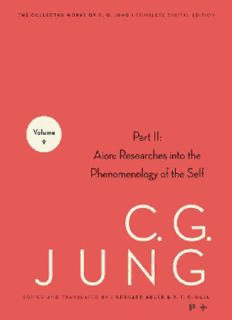
Collected Works of CG Jung

2006 WEAVER HIGH YEARBOOK HARTFORD CT
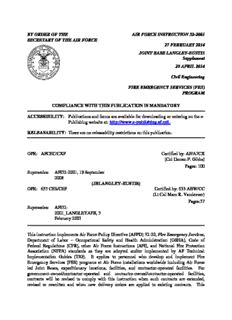
BY ORDER OF THE SECRETARY OF THE AIR FORCE AIR FORCE INSTRUCTION 32-2001 27 ...
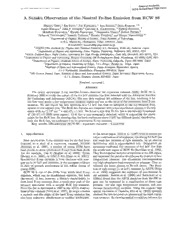
NASA Technical Reports Server (NTRS) 20070016569: A Suzaku Observation of the Neutral Fe-line Emission from RCW 86
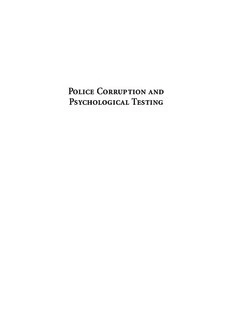
arrigo 00 auto cx - Carolina Academic Press

Yoga Cures: Simple Routines to Conquer More Than 50 Common Ailments and Live Pain-Free

EatingWell soups: 100 healthy recipes for the ultimate comfort food

C anton €>0sctt»er
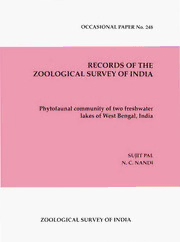
Phytofaunal community of two freshwater lakes of West Bengal, India
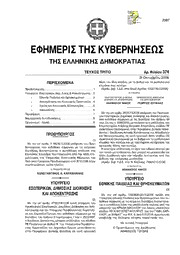
Greek Government Gazette: Part 3, 2006 no. 374

Journal of Surgical Oncology 1993: Vol 54 Table of Contents
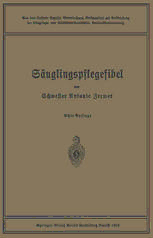
Säuglingspflegefibel

The Philosophy of Ontological Lateness

Detroit: A Biography

